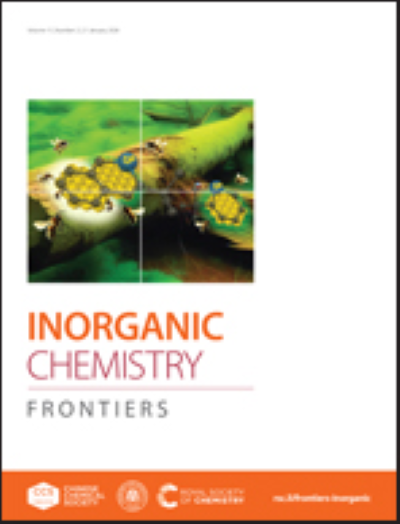Bifunctional Antioxidant for Concurrent Enhancement of Stability and Zinc-ion Storage Properties of Ti3C2Tx
IF 6.1
1区 化学
Q1 CHEMISTRY, INORGANIC & NUCLEAR
引用次数: 0
Abstract
MXenes exhibit exceptional physicochemical properties, rendering them highly promising for applications in electrochemical energy storage devices. However, their easy oxidation and inherent tendency for self-stacking pose significant challenges, thereby limiting their utilization in practical application. In this study, sodium sulfide (Na2S) was used to enhance the stability of Ti3C2Tx under multiple environmental conditions. Additionally, compared to the reported antioxidation agents such as ascorbic acid (VC), sodium borohydride (NaBH4), sodium ascorbate (NaAc), and sodium bisulfite (NaHSO3), Na2S possesses an appropriate level of reducing strength, which was further used as the reducing agent to fabricate 3D macro-porous Ti3C2Tx/reduced graphene oxide (SMG) hydrogels at room temperature. This prevents the oxidation of Ti3C2Tx coming from the traditional heated gelation process and generates the porous structure conducive to the ion transport. As the free-standing cathode for zinc-ion storage, the SMG electrode possesses a high areal special capacity of 526.2 mF cm-2 at 2 mA cm-2, much higher than that of Ti3C2Tx/graphene oxide film (MG, 111.4 mF cm-2), together with outstanding cycle performance (83.2% capacity retention after 30000 cycles). This study presents Na2S as a bifunctional antioxidant for enhancing the stability of MXene and constructing 3D MXene-based aerogels at room temperature with exceptional zinc storage performance.双功能抗氧化剂同时增强Ti3C2Tx的稳定性和锌离子储存性能
MXenes表现出优异的物理化学性能,使其在电化学储能设备中的应用具有很大的前景。然而,它们的易氧化和固有的自堆积倾向给它们的实际应用带来了很大的挑战,从而限制了它们的应用。本研究采用硫化钠(Na2S)增强Ti3C2Tx在多种环境条件下的稳定性。此外,与已有报道的抗氧化剂如抗坏血酸(VC)、硼氢化钠(NaBH4)、抗坏血酸钠(NaAc)和亚硫酸氢钠(NaHSO3)相比,Na2S具有适当的还原强度,进一步将其作为还原剂在室温下制备三维大孔Ti3C2Tx/还原性氧化石墨烯(SMG)水凝胶。这防止了传统加热胶凝工艺对Ti3C2Tx的氧化,并产生有利于离子传输的多孔结构。SMG电极作为独立的锌离子存储阴极,在2 mA cm-2时具有526.2 mF cm-2的高面积特殊容量,远高于Ti3C2Tx/氧化石墨烯膜(MG, 111.4 mF cm-2),并且具有出色的循环性能(3万次循环后容量保持率为83.2%)。本研究提出了Na2S作为一种双功能抗氧化剂,可以增强MXene的稳定性,并在室温下构建具有优异储锌性能的三维MXene气凝胶。
本文章由计算机程序翻译,如有差异,请以英文原文为准。
求助全文
约1分钟内获得全文
求助全文
来源期刊

Inorganic Chemistry Frontiers
CHEMISTRY, INORGANIC & NUCLEAR-
CiteScore
10.40
自引率
7.10%
发文量
587
审稿时长
1.2 months
期刊介绍:
The international, high quality journal for interdisciplinary research between inorganic chemistry and related subjects
 求助内容:
求助内容: 应助结果提醒方式:
应助结果提醒方式:


